Introduction
In the ever-evolving world of artificial intelligence, deep learning frameworks empower developers to push boundaries and revolutionize industries.
Two tech giants, MXNet and TensorFlow, stand out as game-changers, each offering unique strengths and capabilities.
Dive into the heart of MXNet, a high-performance powerhouse praised for its efficiency and scalability. Discover how its flexibility integrates with various programming languages and hardware, opening doors to unparalleled customization.
Meanwhile TensorFlow, Google's open-source marvel renowned for its vast community support and extensive resources. Uncover its user-friendly approach, which makes deep learning accessible to developers of all skill levels, from beginners to experts.
But which framework should you choose?
Brace yourself as we delve into the pros and cons of each, providing invaluable insights to guide your decision. Unlock the secrets to selecting the perfect deep-learning tool for your project's unique demands.
Continue reading to be enlightened as we meticulously dissect MXNet and TensorFlow, empowering you to harness their full potential.
Understanding Your Needs
Several factors will impact your decision when deciding which deep learning framework to use. Here are the key factors to consider:
Project Goals

Identify the specific goals of your deep learning project. Different frameworks excel in different domains.
For example, if you're working on image recognition, you might consider a framework with pre-trained models and specialized tools for computer vision tasks.
If your project involves natural language processing, look for a framework that offers robust language models and supports text analysis tasks.
Skill Level
Assess your skill level in deep learning. Are you a beginner, intermediate, or advanced user? Some frameworks offer more user-friendly interfaces and comprehensive documentation, making it easier for beginners to get started.
On the other hand, advanced users may prefer a framework with more advanced features and customization options.
Available Resources
Consider the resources at your disposal, especially in terms of hardware. Deep learning models often require significant computational power, such as GPUs or TPUs, to train efficiently.
If you have access to powerful hardware, you may prioritize a framework that leverages these resources effectively to speed up training and inference.
Community Support
Evaluate the importance of community support for your deep learning journey. A large and active community can provide valuable resources, tutorials, and forums for troubleshooting and learning.
If you value community engagement and want to tap into a vast pool of knowledge, frameworks with well-established and active communities would be a good fit.
By considering project goals, skill level, available resources, and community support, you can decide which deep learning framework will best suit your specific needs and help you achieve your project objectives.
Next, we will explore MXNet.
Deep Dive into MXNet
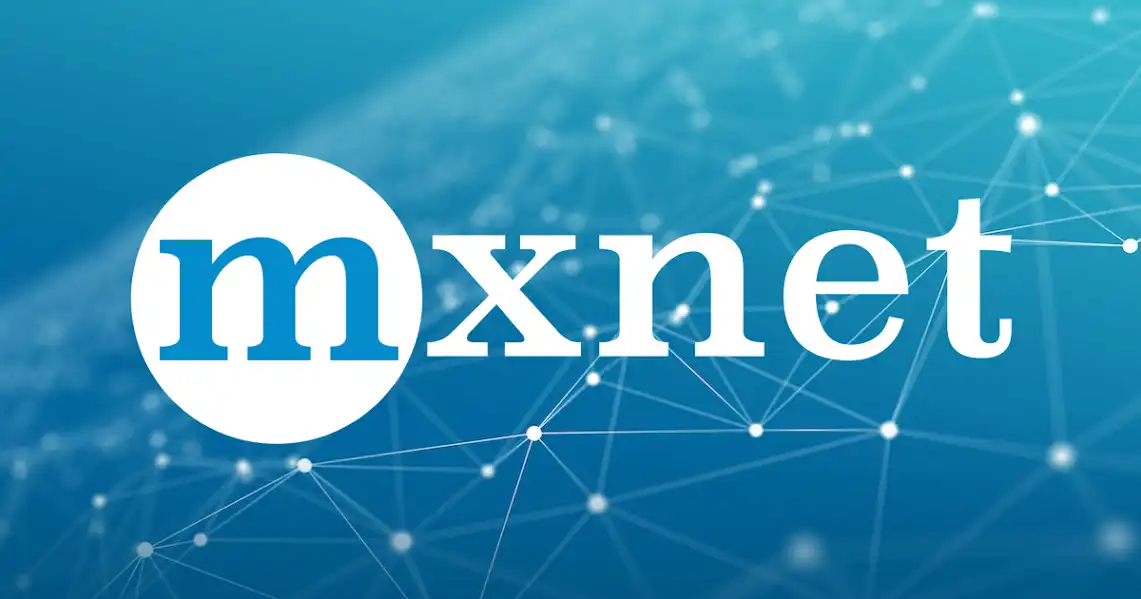
MXNet is a powerful and popular deep learning framework that offers a wide range of features and capabilities.
Let's take a closer look at MXNet, its strengths, and weaknesses.
What is MXNet?
MXNet is an open-source deep learning framework originally developed in 2014 by researchers at the University of Washington and Carnegie Mellon University.
Apache later adopted it and became an Apache Software Foundation project. MXNet is designed to be efficient, flexible, and scalable, enabling developers to build and deploy machine learning models for various applications.
Strengths of MXNet
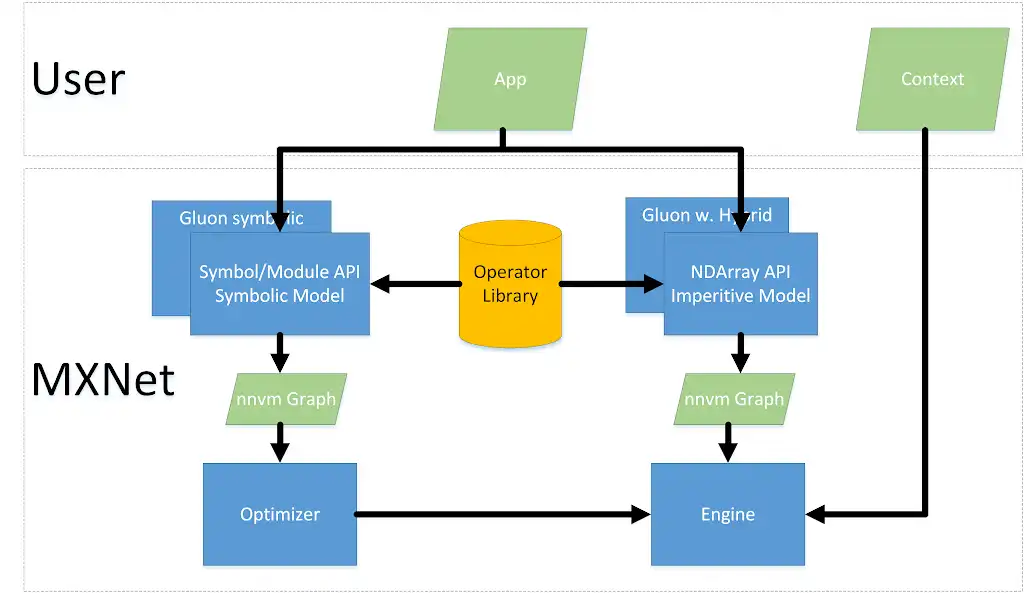
In this section, you’ll find the stengths of MXNet.
Efficiency and Scalability
One of MXNet's key strengths is its efficiency and scalability. It is highly optimized for performance, making it fast and able to handle large-scale projects.
MXNet effectively utilizes multiple GPUs and distributed computing, allowing for parallel processing and faster training of deep neural networks. This efficiency and scalability make MXNet an excellent choice for projects that involve large datasets or complex models.
Flexibility
MXNet offers a high degree of flexibility, allowing users to work with various programming languages and hardware. It provides a user-friendly interface called Gluon, supporting popular programming languages like Python, Scala, and R.
This flexibility makes it easier for developers to build and experiment with different deep-learning models. It leveraging their preferred programming languages and tools.
MXNet also supports a wide range of hardware, including CPUs, GPUs, and specialized accelerators such as TPUs. Thus providing flexibility in choosing the most suitable hardware for a particular project.
Ease of Deployment
MXNet provides seamless model deployment capabilities, allowing developers to deploy trained models into production easily.
It supports various deployment options, including cloud-based platforms like Amazon Web Services (AWS) and Microsoft Azure, as well as mobile and embedded devices.
MXNet's deployment features simplify integrating deep learning models into real-world applications, making it a convenient choice for developers.
If you are the one who likes the no coding chatbot building process, then meet BotPenguin, the home of chatbot solutions. With all the heavy work of chatbot development already done for you, simply use its drag-and-drop feature to build an AI-powered chatbot for platforms like:
Weaknesses of MXNet
While MXNet is a powerful and flexible deep learning framework, it has a few potential weaknesses.
Despite its advantages, MXNet may fall short compared to other popular frameworks in some areas. Keep reading to explore the weaknesses.
Smaller Community
One potential challenge of using MXNet is its smaller community than other popular deep learning frameworks, such as TensorFlow.
Although the MXNet community is rapidly growing, its smaller size may mean fewer readily available resources and less active community support.
However, it is essential to note that MXNet still has a robust community and offers valuable resources, tutorials, and forums to seek help.
Suggested Reading:
MXNet Essentials: Navigating Deep Learning for AI
Steeper Learning Curve
Another consideration is that MXNet may have a slightly steeper learning curve than frameworks like TensorFlow. MXNet's flexibility and extensive features can make it more complex for beginners to grasp initially.
However, once users become familiar with MXNet's concepts and syntax, it provides a highly customizable and robust framework for deep learning.
Next, we will see TensorFlow.
Deep Dive into TensorFlow
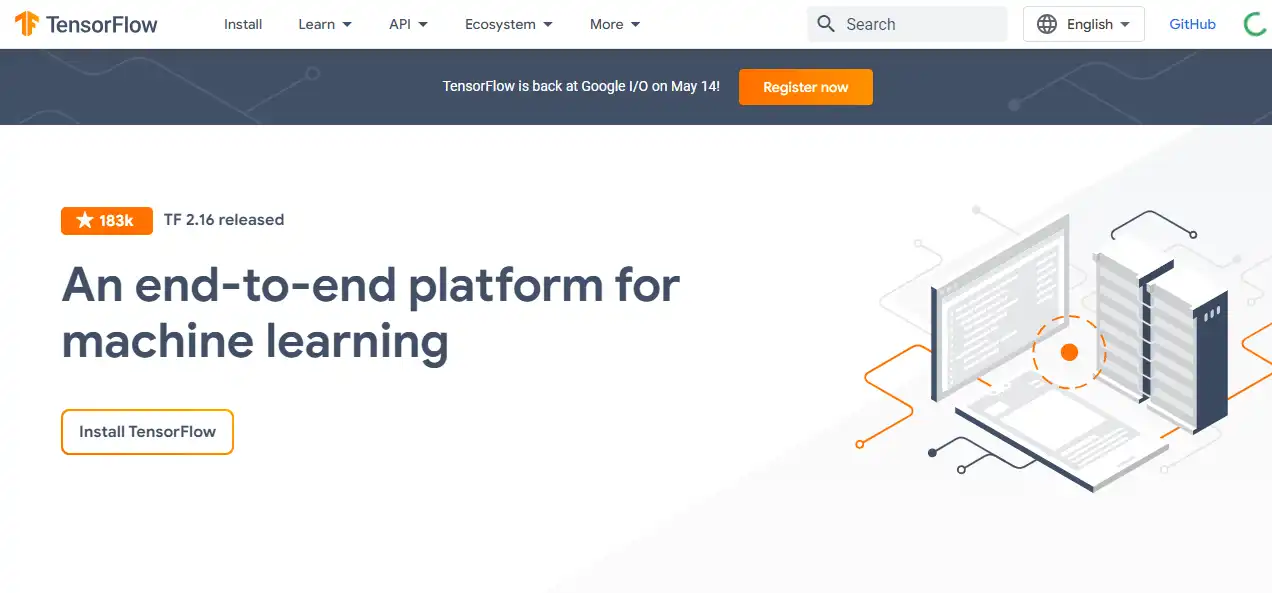
Let's examine TensorFlow, one of the most popular deep learning frameworks that has significantly contributed to the field.
We'll examine its strengths and weaknesses.
What is TensorFlow?
TensorFlow is known for its ease of use, and is equally usable for developers at all levels of expertise, including those just starting out.
So it's no wonder that Keras—a more user-friendly high-level API built on top of TensorFlow—is fast becoming a hit in the AI community.
Complex implementation details are nothing but a distraction for developers trying to build and iterate on their models.
For beginners in deep learning, this low barrier of entry is an attractive feature that could definitely tilt the balance towards TensorFlow as you start out.
Strengths of TensorFlow
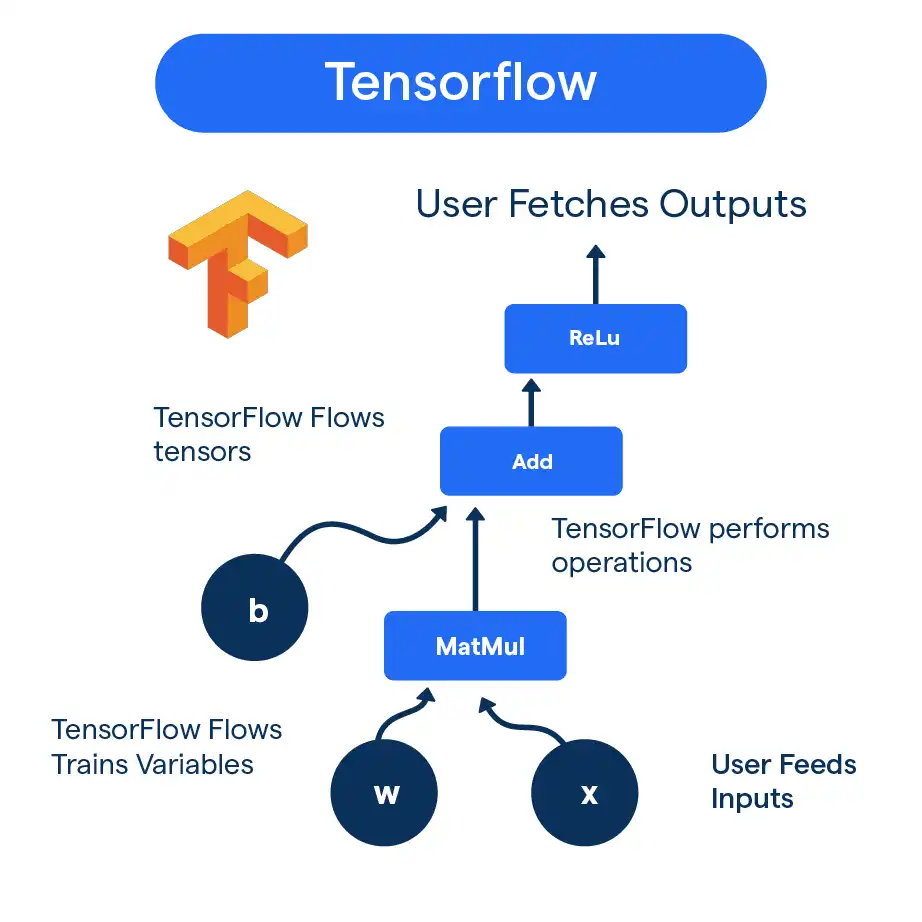
TensorFlow offers numerous strengths that make it a compelling option for a wide range of deep learning applications.
Let's delve into some of the key strengths contributing to TensorFlow's popularity and widespread adoption.
Large Community and Resources
One of the significant strengths of TensorFlow is its vast and vibrant community. With a large user base, TensorFlow benefits from an extensive pool of resources, tutorials, and forums that provide valuable support to users.
The active community helps troubleshoot issues, share best practices, and stay up-to-date with the latest advancements in deep learning. This abundance of resources makes TensorFlow a great choice for developers who value community engagement.
Extensive Library and Tools
TensorFlow offers an extensive library that includes pre-built models and tools. These resources enable developers to jump-start their projects and build upon existing models, saving considerable time and effort.
TensorFlow's library covers many domains, including image classification, natural language processing, and reinforcement learning. Developers can leverage these pre-built models and tools to accelerate their workflow and focus on solving specific problems.
Suggested Reading:
TensorFlow vs TensorFlow GPU: Unraveling the Key Differences
Ease of Learning
TensorFlow is known for its user-friendly approach, making it accessible to developers of all skill levels, including beginners.
TensorFlow provides a high-level API called Keras, which offers an intuitive and easy-to-understand interface for building and training neural networks.
Keras abstracts away complex implementation details, allowing developers to prototype and iterate on their models quickly. This ease of learning lowers the barrier to entry for newcomers to deep learning. Thus making TensorFlow an excellent choice for those starting their journey.
Weaknesses of TensorFlow
While TensorFlow boasts an impressive array of strengths, it's crucial to acknowledge its potential weaknesses to decide on its suitability for your specific needs.
Despite its dominance in the deep learning landscape, TensorFlow does have some areas where it may fall short or present challenges.
Let's explore some of the key weaknesses of TensorFlow to gain a comprehensive understanding of this powerful framework.
Can be Complex for Large Projects
One potential challenge of using TensorFlow arises with managing large projects. As projects grow in scale and complexity, TensorFlow's extensive features and flexibility can sometimes introduce code organization and maintenance complexity.
Effectively managing dependencies, structuring code, and designing scalable architectures can become more challenging.
However, TensorFlow provides several best practices and design patterns to address these challenges, and with experience, developers can navigate these complexities effectively.
Suggested Reading:
TensorFlow for Python: Simplifying AI Development
Slower Performance
Although TensorFlow is a powerful framework, it might have slightly slower performance compared to MXNet for certain tasks. This difference in performance can be attributed to the architectural differences between the two frameworks.
However, it's important to note that TensorFlow is continually being optimized, and for most applications, the difference in performance may not be significant.
Additionally, TensorFlow provides options to leverage hardware accelerators like GPUs and TPUs, which can significantly enhance its performance.
Next, we will cover choosing the right framework for MXNet and TensorFlow.
Choosing the Right Framework
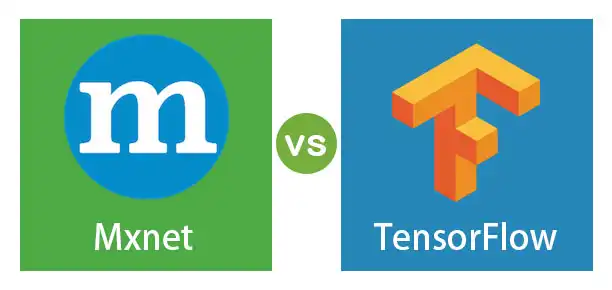
Selecting the right deep learning framework is a crucial decision that can greatly impact the success of your projects.
Let's dive into the key factors to consider when choosing between MXNet and TensorFlow.
To help you make the right choice, consider the following factors:
- Community Support: If you prefer a larger community with extensive resources and active user support, TensorFlow may be the better option.
- Ease of Learning: If you are a beginner or value simplicity, TensorFlow's intuitive interface, especially through Keras, makes it easy to get started.
- Performance: If performance is your top priority and you are working on large-scale projects requiring high-speed processing, MXNet's optimization and scalability may be more suitable.
- Flexibility: MXNet and TensorFlow offer flexibility regarding language support and hardware compatibility. Consider your specific requirements in these areas.
- Project Complexity: Considering more complex projects, consider how well the framework handles code organization, dependency management, and scalability.
Consider these factors and prioritize the ones that align with your needs. By evaluating these aspects and understanding the unique strengths and weaknesses of MXNet and TensorFlow, you will be equipped to make an informed decision for your deep learning journey.
Factor | MXNet | TensorFlow |
Community Support | Growing community, but smaller compared to TensorFlow | Large and vibrant community with extensive resources |
Ease of Learning | Slightly steeper learning curve | User-friendly, especially with the Keras API |
Performance | Efficient and scalable, capable of handling large-scale projects | Slightly slower compared to MXNet for specific tasks |
Flexibility | Highly flexible in terms of supported languages and hardware | Offers a wide range of tools and supports various hardware options |
Project Complexity | May require some experience to handle larger projects effectively | Provides best practices and design patterns to manage complexity |
Conclusion
In conclusion, it is important to have the right information to unlock the full potential of your deep learning journey with the power of MXNet and TensorFlow!
MXNet boasts unparalleled efficiency and scalability. Thus empowering you to tackle complex projects easily. Embrace its flexibility to work seamlessly across languages and hardware.
TensorFlow's intuitive interface and vast community support offer a beginner-friendly pathway into deep learning mastery. Leverage its extensive libraries and cutting-edge tools.
Evaluating your needs is key. Whether you prioritize performance, ease of learning, or community engagement, this comprehensive guide equips you with the insights to choose wisely. Embark on your deep learning adventure today and unleash groundbreaking innovations!
Suggested Reading:
Comparing TensorFlow and PyTorch for NLP Chatbot Development
Frequently Asked Questions (FAQs)
Is MXNet faster than TensorFlow?
MXNet can potentially be faster, especially for smaller datasets and during cold runs, but benchmarks can vary depending on specific tasks.
Is TensorFlow easier to use than MXNet?
TensorFlow's API might be considered slightly more user-friendly, especially due to its larger user base and more abundant resources.
Which framework has a larger community?
TensorFlow boasts a significantly larger and more active community, which can be helpful for finding solutions and learning from others.
Is MXNet still relevant?
Yes, MXNet is still actively maintained and used by companies like Amazon and Microsoft, but its popularity might not match TensorFlow's.
Should I use MXNet for computer vision tasks?
MXNet can be a good choice for computer vision tasks due to its potential for speed and efficiency, but it depends on specific needs and resource limitations.
Can I use Keras with both MXNet and TensorFlow?
Yes, Keras can be used as a high-level API with both MXNet and TensorFlow, allowing for easier model building and experimentation.
Which framework is better for production deployment?
Both MXNet and TensorFlow can be used for production deployment, and the choice often depends on factors like project requirements, team expertise, and available resources.


